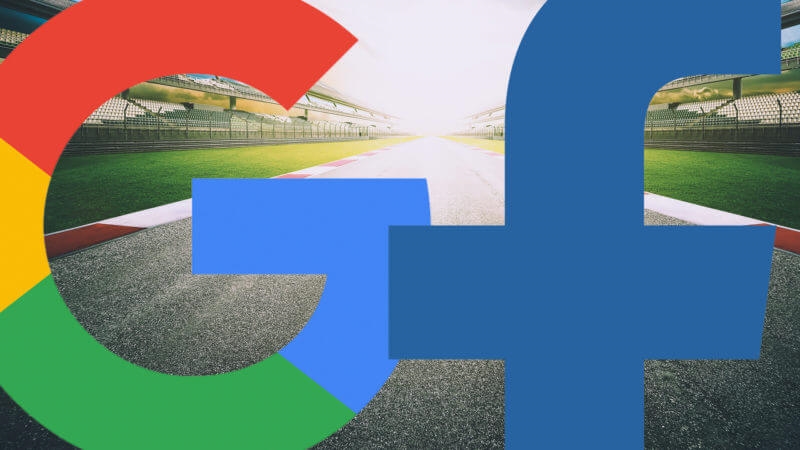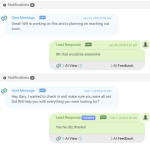The duopoly dilemma: Is it worth buying digital media beyond Facebook and Google?
As Google and Facebook continue to dominate the digital ad industry and smaller players shrink, columnist James Green discusses why you need to look beyond the walled gardens and seek value everywhere.

Let’s start with the good news. The US internet ad industry grew 21.8 percent (from $59.6 billion to $72.5 billion) last year, according to the Interactive Advertising Bureau. You also may have heard the bad news: Google and Facebook account for almost all of that growth, and when other big names like Amazon, Snapchat and a couple of other big public high-fliers like The Trade Desk and Criteo are taken into consideration, many players in the industry appear to have shrunk from 2015 to 2016.
Why did the big players grow and the smaller players shrink? Is that a good thing for the industry in general, a culling of the weak? Or is it a bad thing that results in reducing choice and innovation? And as a buyer, what should you do? Play it safe?
Back in the day, there used to be a saying: “Nobody ever got fired for buying IBM” (implying that one should make the safe choice). That simply isn’t true anymore. So let’s look at why the numbers are the way they are and what we should do.
1. Growth in digital video, decline in TV
This skews the numbers. Many players aren’t big in video, but much of the growth in digital is coming from it regardless. Stripping out video makes the playing field look more level again.
Digital ad spending will see double-digit growth each year, soaring to $129 billion in 2021 from $83 billion in 2017, according to eMarketer’s forecast. Much of this growth can be attributed to the shift from TV to digital.
Digital ad expenditures far surpassed TV for the first time last year, and the gap will broaden by roughly $10 billion in 2017. Google (YouTube) and Facebook are uniquely positioned to garner many of these TV ad dollars — along with the likes of Hulu and other digital video providers.
2. Measurability
Facebook and (to a lesser degree) Google both have their own ecosystem. If you buy an ad on Facebook, you most likely know where it’s going to run, and the systems of metrics are closely known and tightly controlled.
Despite a variety of snafus (like Facebook exaggerating video impressions and YouTube showing ads on terrorist sites), these walled gardens are still safer and simpler to measure than the multitude of systems you need to buy on the unwashed internet.
Ironically, Apple (a Google competitor in the mobile space) has helped the two behemoths by making it difficult for ad tech providers to track people who use Safari. This is no big deal on desktops and laptops, but as AdExchanger points out, it’s a huge deal on mobile.
But does buying on Facebook and Google solve this problem?
If we go back to the basics of advertising, and think about reach and frequency, the very largest sites on the internet have massive reach — some up to 90 percent of the internet. However, that doesn’t mean the frequency with which they reach these people is also high.
So if you want to reach everyone, you’d better be buying elsewhere as well. If you can put systems in place to make sure you can measure your buy, then you can remove the big player advantage and expand your frequency to a large portion of your audience.
3. Death of the middleman
Disintermediation (the removal of the middle-man/reseller) has caused disruption across various industries, like travel agencies, taxi companies and retailers. This is also happening in ad tech. For the past 10 years, the media buyer has taken a circuitous route to the media seller. It’s gone something like this.

But more and more, demand-side platforms (DSPs) are connecting directly to agencies — and sometimes advertisers — to take a more direct path to the publisher. In addition, SSPs (supply-side platforms) are getting cut out by header bidding — a programmatic technique wherein publishers offer inventory to multiple buyers simultaneously before making calls to their ad servers.
And although it’s old news that ad networks are dead, all sorts of third-party services have been affected as well; with many services becoming increasingly “built in,” far fewer clients need third-party services.
For example, historically everyone spent money on a viewability vendor. But is there really a need for the publisher, the SSP, the data provider and the DSP all to be clients of that vendor? No. Only one person needs to be.
As this consolidation has happened, revenues to these companies have declined — or growth has slowed. All of this has resulted in more dollars to publishers (Yay!) and fewer dollars in the ad tech ecosystem outside of the big players. Disintermediation is a good thing, but it doesn’t effect the companies that are adding real value.
So what’s a marketer to do?
Google and Facebook are winning because they have video, they’re measurable, they’re safe, and there are no middlemen. But you won’t get the frequency you want from just a couple of players, so you’ll need to look for the same qualities in your other vendors.
Although buying outside of these two platforms is more complicated than buying within them, there are a variety of things you can only get outside of the walled gardens:
- Data: If you want more data and the ability to control, manage and analyze it, you have to buy outside Facebook and Google.
- Innovation: Not all of the innovation is coming from the big players. For proof, there is a long list of Facebook acquisitions and Google acquisitions, as they’ve needed to buy innovators to stay on top. Much of what is being sold by the largest players was invented outside. If you want to get the next big thing, you’d better keep looking at everybody else.
- Performance: There’s a reason that Avis (the No. 3 rental car company in the US) carries the slogan, “We try harder.” You’re always going to get better, more personal attention from someone who wants to be No. 1. What seems to be happening is that most smart buyers are hedging their bets and putting half of their dollars with big players and the other half with everybody else.
I’ve worked in advertising technology for 20 years now, and the thing I love about it is the constant change. Nothing stays the same for very long. Right now, we are in a consolidation phase. But that won’t last forever, and the smart money will keep searching for value everywhere.
Some opinions expressed in this article may be those of a guest author and not necessarily Marketing Land. Staff authors are listed here.
Marketing Land – Internet Marketing News, Strategies & Tips
(40)














